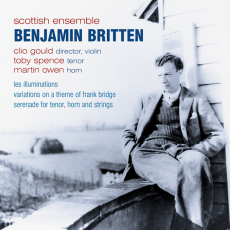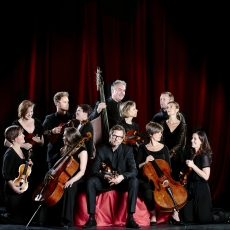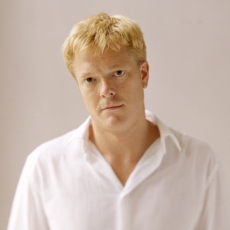Scottish Ensemble - Britten - HighFidelityReview.com
It takes a lot of nerve for some brash bunch to come along and try to make a recording of a piece that was already masterfully recorded under the composer's own direction. And it would take a lot of talent, a lot of inspiration, and a distinctive angle to stake out new territory in an oft-recorded work. But I'm impressed to report that the Scottish Ensemble under Clio Gould's direction have done just that in Benjamin Britten's ‘Variations on a Theme of Frank Bridge'. And the rest of this new Linn hybrid CD/SACD is just as good, if not better.
On the Linn disc, tenor Toby Spence scales his performance intimately, matching the size of the Scottish Ensemble, and in turn the recording is close-up and personal. Horn virtuoso Martin Owen balances himself against the rest of the group in the ensemble numbers, but he makes the most of the "Prologue", playing with incredible dynamic range and pushing himself as close to the edge as Anthony Halstead did in the Nimbus recording. The following "Pastoral" flows more than usual, but Spence's silvery lyricism sells it. The "Nocturne" is broadly paced, allowing evocative space for both voice and horn. Moving into the "Elegy", Owen rivals Halstead for power and sharp character, and Spence is simply mesmerizing. The slow pace for the movement intensifies it immensely, and Owen's control over his final few notes is masterful. The subsequent "Dirge" finds Spence growing increasingly desperate as Gould's strings weave an especially sinister fugue, capped at its height by a demonic contribution from Owen's horn. Tension is released in the following "Hymn", where Spence's voice falls as lightly as moonbeams, while Owen's horn scampers about. The culminating "Sonnet" is broad and magical, and the offstage horn "Epilogue", poignant. A more convincing case for an intimately-scaled performance of the ‘Serenade is difficult to imagine.
Linn Records again brings us a demonstration-class multichannel recording on this hybrid release. The surround channels are used in the 5.1 multichannel SACD program to bring the listener inside the same space occupied by the performers, yet there is no excessive or overemphatic use of the surrounds which might distract from the music at hand. The multichannel program simply increases the sense of intimacy in what is already a very intimate set of performances, proving how potent it is when a recording matches the style of performance. For contrast, one could look at the stately performance of the Britten ‘Serenade' by Philip Langridge and Steuart Bedford, given an inappropriately reverberant recording by Collins. There, the performance and the recording seem at odds. Such an atmospheric, reverberant recording works fine, however, when it is paired on Nimbus with the much more freely expressive performance of Jerry Hadley and William Boughton. Here on Linn we get an intimate scaling but with a strong sense of space around the performers, matching their expressive, evocative style. Although some intimacy is lost in moving to the stereo-only SACD layer, the resolution of the DSD recording assures that a strong sense of instrumental color comes through, allowing the listener to relish high string harmonics without fear of them sounding glassy and screechy. The regular CD layer of the recording is again a shade less effective than the high-resolution programs, but it won't just stand comparison with any other CD recording on the market, it will blow them away.


